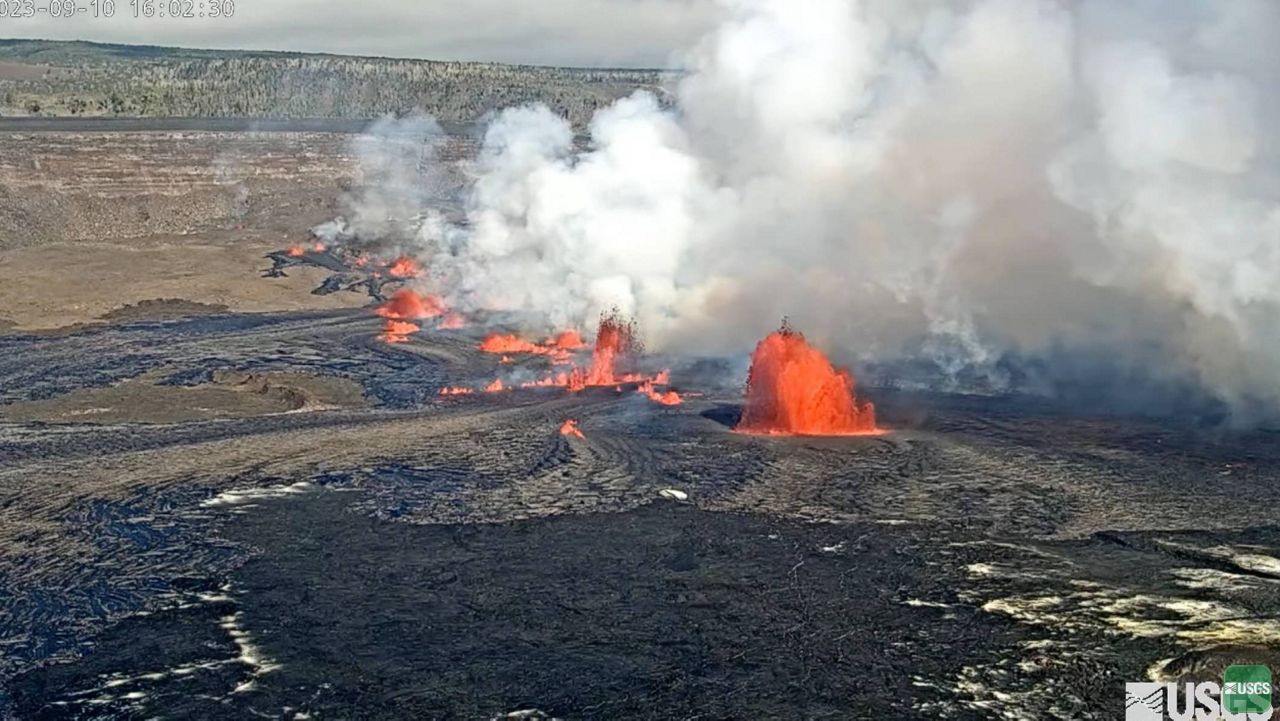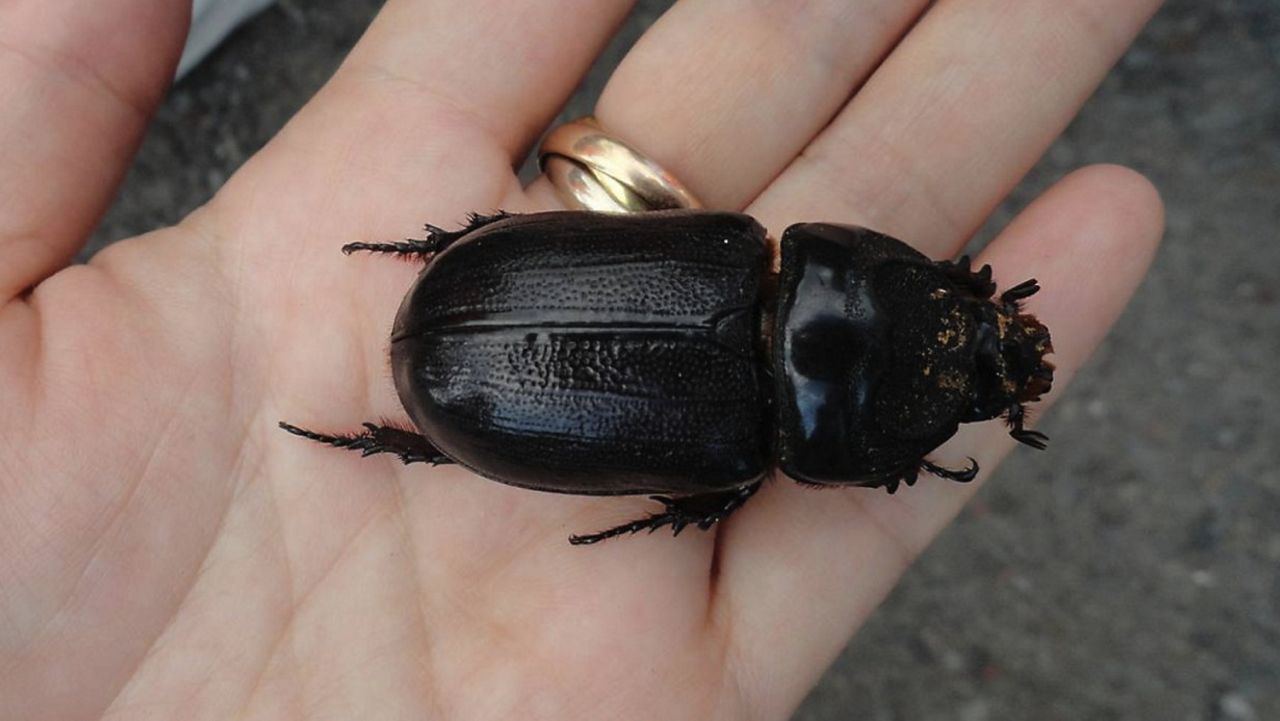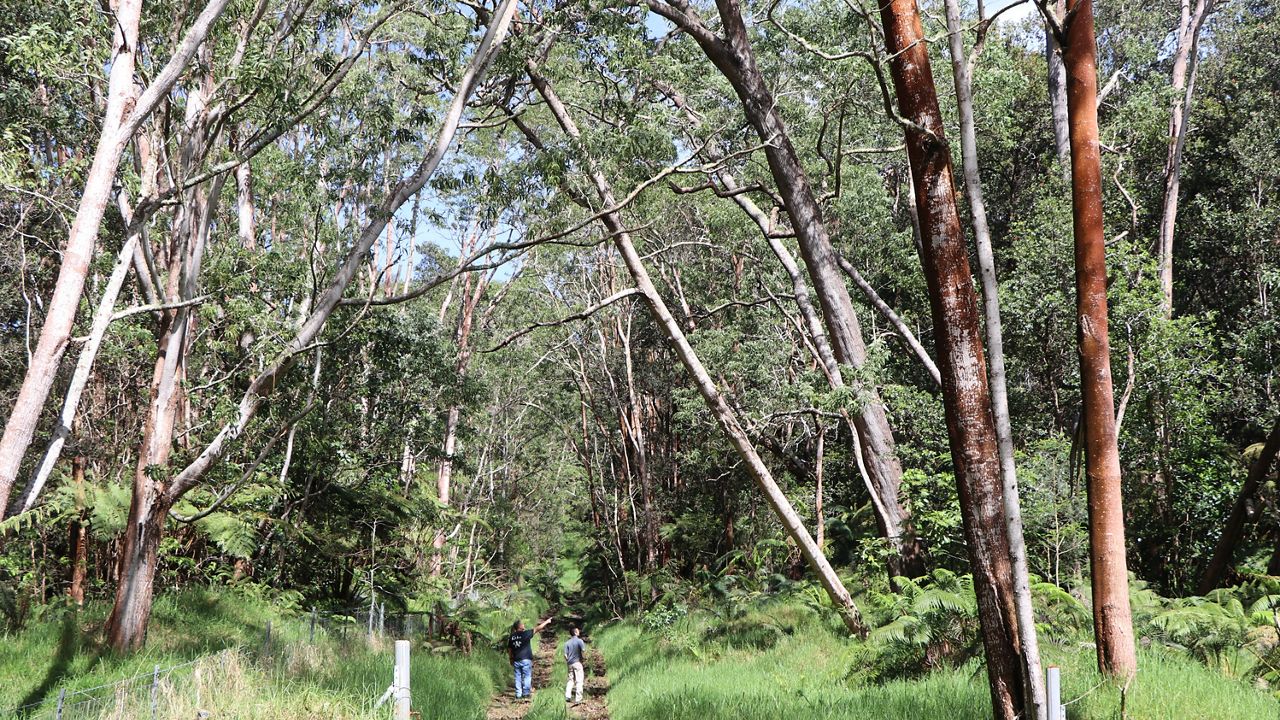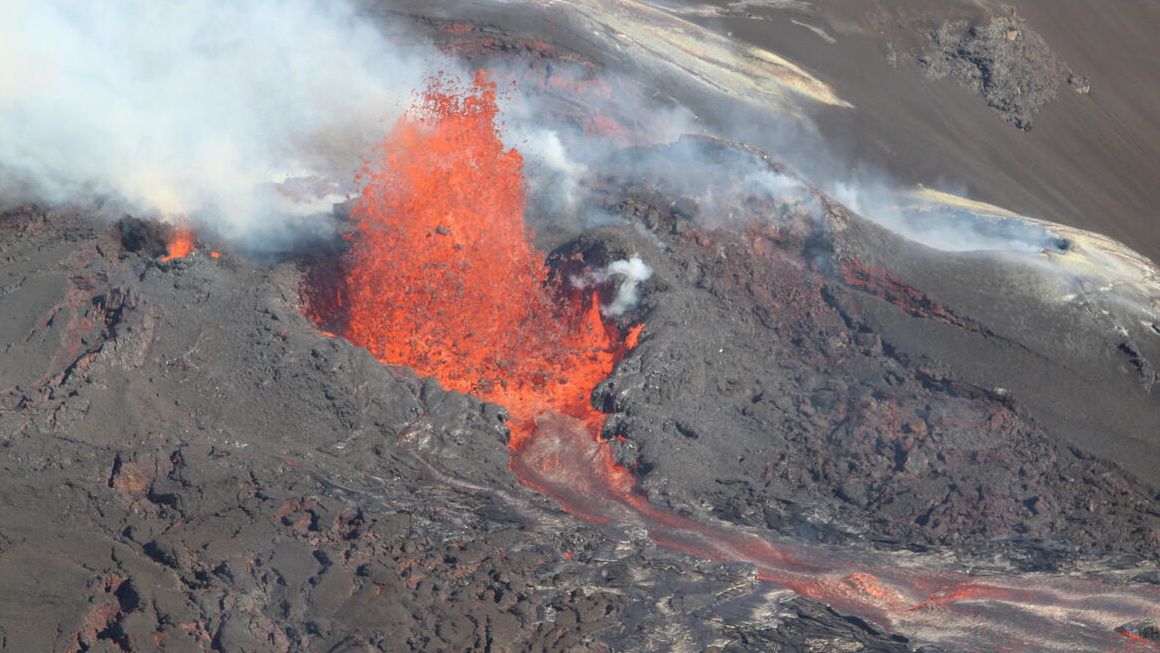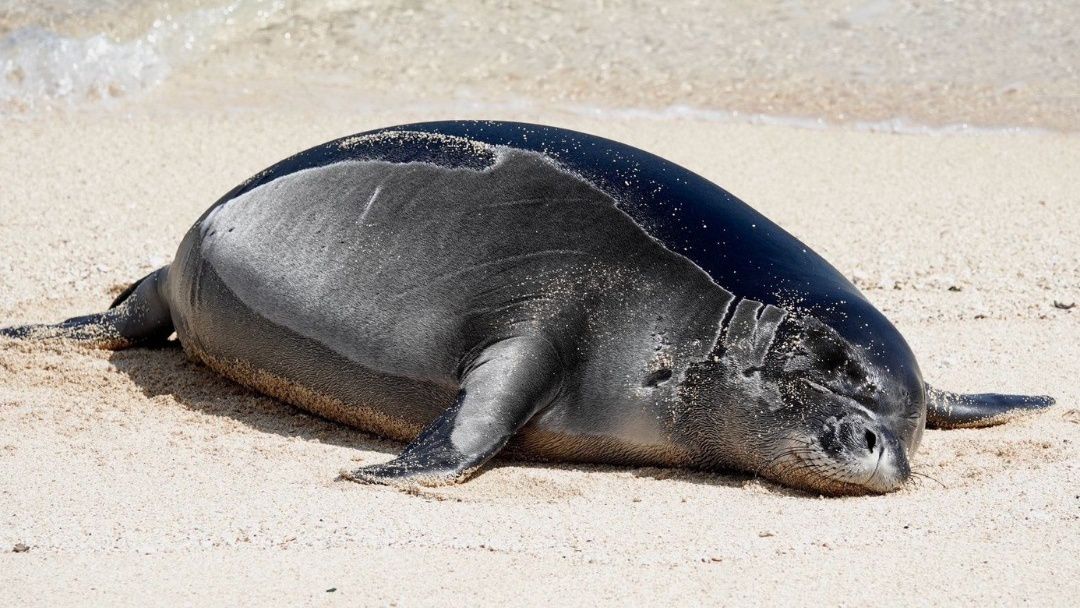HILO, Hawaii — As of 8:10 a.m. Monday, scientists at the Hawaiian Volcano Observatory report the eruption within Kilauea’s summit caldera that started Sunday afternoon continues with activity confined to “the downdropped block” and Halemaumau Crater.
The agency has lowered the volcano alert level from “warning” to “watch” since the type of eruption and location of the fissure have stabilized, the initial high “effusion rates” have declined and no infrasture is threatened, according to the update.
Kilaueaʻs aviation color code is also being lowered from red to orange since there is currently no threat of significant volcanic ash in the air outside of the closed area of Hawaii Volcanoes National Park.
HVO scientists expect Kilauea’s summit eruption will continue and remain within the Kilauea caldera inside the park. There is no indication of activity moving elsewhere at this time.The USGS Hawaiian Volcano Observatory released an alert that the Kilauea volcano began erupting at about 3:15 p.m. HST on Sunday.
Researchers observed eruption activity in webcam images of the Kilauea summit and from field reports indicating eruption had begun within Halemaumau Crater and on “the down-dropped block to the east in Kilauea’s summit caldera” inside Hawaii Volcanoes National Park.
The webcam shows fissures at the base of Halemaumau Crater, causing lava flows on the surface of the crater floor. Thus far, activity is confined to Halemaumau.
According to HVO officials, strong seismic activity and “rapid uplift of the summit” preceded the eruption.
An earlier report issued at 2:52 p.m. Sunday indicated Kilauea volcano was not erupting. However, earthquake activity had increased, and patterns of “ground deformation” at Kilauea’s summit indicated magma moving below the surface.
HVO officials have elevated the volcano alert level from a Watch to a Warning and its aviation color code from Orange to Red as they evaluate the eruption and related hazards.
HVO will closely monitor the activity currently confined within the national park and report any significant changes.
In June, Kilauea erupted for several weeks, displaying fountains of red lava without threatening any communities or structures. Crowds of people flocked to the Big Island’s Hawaii Volcanoes National Park, which offered safe views of the lava.
Kilauea, Hawaii’s second-largest volcano, erupted from September 2021 until last December. A 2018 Kilauea eruption destroyed more than 700 homes.
—The Associated Press contributed to this story.
EDITORʻS NOTE: The article has been updated with information provided as of 8:10 a.m. Monday regarding continued activity, lowered alert level and aviation code. (Sept. 11, 2023)




